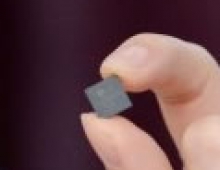
Samsung and LG Focus On ATSC 3.0 UHD Transmission At NAB
Samsung Electronics and LG Electronics showecased their techniologies in UHD broadcasting at the NAB 2016 broadcasting equipment exhibition in Las Vegas. Samsung introduced a UHD technology that is based on ATSC 3.0, a standard for UHD ground wave program. The company demonstrated the entire process of having videos that are recorded at UHD resolution sent in real-time after being encoded and be received by Samsung's SUHD TV.
Samsung has worked with MBC, ETRI (Electronics and Telecommunications Research Institute), DS Broadcast, and Kai-media to develop this technology.
Samsung also demonstrated a technology that is needed to broadcast sports events live in real-time. This technology is a MTT (MPEG Media Transport) and quickly streams huge broadcasting signals after diving them into packets.
Samsung Electronics also implemented an EPG (Electronic Program Guide) service that allows consumers to replay past programs. The company also introduced a technology that allows consumers to watch UHD broadcasting programs on demand (VoD).
LG Electronics demonstrated UHD broadcasting through a TV that has an ATSC 3.0 receiver chip built-in, in a real-life broadcasting environment using a transmitting tower that is located in the Los Angeles area.
ROUTE, which is a IP-based technology that transports programs, also drew attention. The technology can be used to store much information into ground wave signals, allowing broadcasters to offer consumers extra services without requiring internet connection for the TVs.
South Korea, U.S. and Mexico are supporting ATSC 3.0. On the other hand, DVB - the group responsible for European broadcasting standards - is planning to establish its own standards for 4K UHD.




















